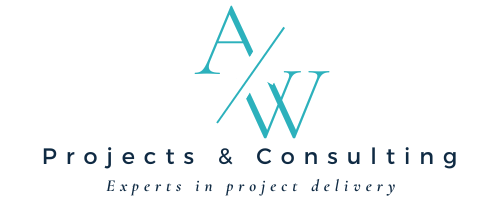Winning Tenders: How to Secure Project Contracts with Confidence
In the competitive world of business, winning tenders is crucial for securing valuable projects and driving growth. A successful tender proposal not only showcases your capabilities but also positions your business as the best choice for the project. Whether you’re new to the tendering process or looking to refine your approach, this guide will help you understand how to craft compelling proposals and increase your chances of winning tenders.
1. Understand the Tender Requirements
Why It Matters: Understanding the tender requirements is the first step in crafting a winning proposal. It ensures that your submission aligns with the client’s needs and criteria, making it more likely to be considered.
How to Do It:
- Read the Tender Document Carefully: Thoroughly review the tender document, including the scope of work, specifications, and evaluation criteria.
- Clarify Doubts: If any part of the tender document is unclear, seek clarification from the issuing authority. Submit questions in the manner specified in the tender documents to ensure you get accurate answers.
- Identify Key Requirements: Focus on the essential criteria such as technical specifications, deadlines, budget constraints, and compliance requirements.
2. Craft a Compelling Proposal
Why It Matters: A well-structured and compelling proposal demonstrates your understanding of the project and your ability to deliver. It sets you apart from competitors and highlights your strengths.
How to Do It:
- Executive Summary: Start with a strong executive summary that captures the key points of your proposal. It should outline how your solution meets the client’s needs and why you are the best choice.
- Technical Solution: Detail your approach to the project, including how you will meet the technical requirements and solve any challenges. Include technical diagrams, methodologies, and relevant experience.
- Project Management Plan: Outline your project management approach, including timelines, milestones, resource allocation, and risk management. Show that you have a clear plan for delivering the project on time and within budget.
- Financial Proposal: Provide a detailed and transparent financial proposal. Break down costs, provide justifications, and ensure that your pricing is competitive yet sustainable.
- Compliance and Credentials: Include evidence of compliance with relevant regulations and standards. Highlight any certifications, qualifications, and previous successful projects that demonstrate your capability.
3. Demonstrate Your Unique Value Proposition
Why It Matters: A unique value proposition (UVP) distinguishes your business from competitors by highlighting what sets you apart and the additional benefits you offer.
How to Do It:
- Highlight Strengths: Emphasize your company’s strengths, such as specialized expertise, innovative solutions, or superior customer service.
- Showcase Relevant Experience: Provide case studies or examples of similar projects you’ve completed successfully. Use these to demonstrate your expertise and reliability.
- Offer Added Value: Identify ways you can add extra value to the project, such as through additional services, cost-saving measures, or unique innovations.
4. Build Strong Relationships and Network
Why It Matters: Building relationships with clients and stakeholders can enhance your reputation and increase your chances of winning tenders. Networking helps you stay informed about upcoming opportunities and build trust with potential clients.
How to Do It:
- Attend Industry Events: Participate in industry conferences, trade shows, and networking events. Engage with potential clients and industry leaders to build relationships and learn about new opportunities.
- Engage with Tender Issuers: Whenever possible, engage with the issuing authority or client before submitting your proposal. Understanding their priorities and building rapport can provide valuable insights.
- Seek Feedback: After a tender is awarded, seek feedback if you’re not selected. Constructive feedback can help you improve future proposals and understand the client’s decision-making process.
5. Ensure Compliance and Attention to Detail
Why It Matters: Attention to detail and compliance with all tender requirements are crucial for avoiding disqualification and demonstrating professionalism.
How to Do It:
- Follow Instructions Precisely: Adhere to the tender submission guidelines, including formatting, deadlines, and documentation requirements. Ensure your proposal is complete and follows the specified format.
- Proofread and Review: Carefully proofread your proposal to avoid errors and ensure clarity. Consider having a second set of eyes review it for accuracy and completeness.
- Verify Compliance: Ensure that all required documentation is included and that your proposal meets all compliance and regulatory requirements.
Real-World Example: A Successful Tender Submission
Case Study: Construction Firm Secures Major Project
A construction firm aimed to secure a contract for a large infrastructure project. They applied the following strategies:
- Understanding Requirements: They meticulously reviewed the tender document, seeking clarifications where needed to fully understand the project scope and evaluation criteria.
- Crafting the Proposal: Their proposal included a comprehensive executive summary, detailed project plan, and clear financial breakdown. They highlighted their experience with similar projects and their unique approach to managing risks.
- Demonstrating Value: They showcased their successful track record with similar projects and offered additional services such as advanced project monitoring technology.
- Building Relationships: They engaged with the client’s representatives before submission, gaining insights into their priorities and preferences.
- Attention to Detail: They followed all submission guidelines precisely, proofread their proposal, and ensured full compliance with tender requirements.
As a result, the firm’s proposal stood out for its clarity, detailed planning, and added value, leading to a successful award of the contract.
Conclusion
Winning tenders involves more than just submitting a proposal; it requires a strategic approach to understanding client needs, crafting compelling submissions, and building strong relationships. By following these five steps—understanding requirements, crafting a compelling proposal, demonstrating unique value, building relationships, and ensuring compliance—you can significantly enhance your chances of winning tenders and securing valuable projects.
Embrace the tendering process with confidence, continuously refine your approach, and stay informed about industry trends and client expectations. With the right strategy and execution, you can position your business as the ideal choice for project contracts and drive growth and success.







